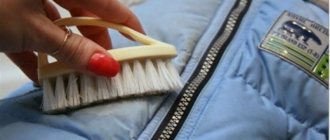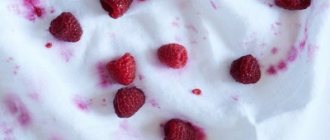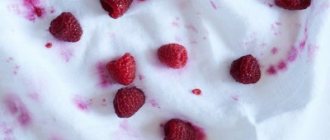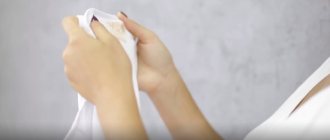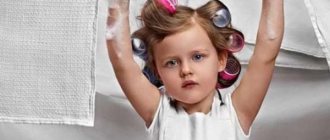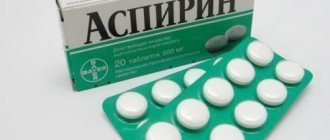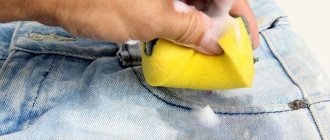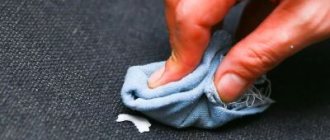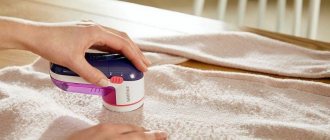09/28/201602/13/2017 Maria Ivanova
Many housewives have to remove berry stains while taking care of the belongings of adult family members and children on a daily basis. Removing these “appetizing” traces is an issue that becomes especially relevant in the summer. The problem is aggravated when there are young children in the family.
If you need to put clothes and other things in order
Withdrawal is a problem that needs to be approached with the utmost care. The fact is that not every berry can be traced easily and quickly. The most difficult stains to deal with are blackberry and blueberry stains. Their removal must proceed in such a way as not to harm the processed item of an adult or child.
Most often, the removal of berry traces is carried out using simple and fairly affordable means that are almost always at hand. This review is dedicated to getting to know them.
- When starting to put things in order that you use every day, you must first of all give an accurate assessment of the problem. Old berry stains are easier to remove when their “origin” is known. It is this fact that becomes decisive when deciding on the choice of method and means.
- Old stains are less easy to remove than new ones. If traces of juice on colored fabric are washed under running cold water, the main dye will be removed more easily.
- Even if you need to remove old stains, you should never resort to soap: the natural dyes contained in berry juice, coming into contact with alkali, are fixed on the fabric, which can lead to a change in color.
- If there is a need for a strong concentration of the agents and solutions used, then you need to gradually increase it - as you monitor the results of the impact.
- If you test the selected product on a small and discreet area, you can avoid new problems: the appearance of new stains or damage on the product being treated, a child’s clothing or any textile product.
- If the stain is large enough, it must be removed in the direction “from the edges to the center.” This approach will prevent the spread of pollution.
What not to use
It is not recommended to use the following products:
- solvents (acetone, white spirit and others) - spoil the structure of delicate fabrics, effectively remove dirt, but the clothes begin to look worse;
- chlorine-containing products, if they are prohibited (information is on the product label);
- boiling water (boiling is a good method, but it is contraindicated for most things, which is also indicated on the label);
- stain removers and other preparations that are not suitable for the color and type of fabric (the packaging always indicates what the product is suitable for).
Also, you should not leave the active substance on the surface of the fabric for longer than 30-40 minutes. Cherry juice dissolves quickly, and longer exposure will only spoil the material.
If clothes have pile (velor, velvet), it is not recommended to iron them after washing. Processing with aggressive agents makes the fabric more delicate and increases the risk of damage, so it is better to use a steamer rather than an iron.
Items stained with juice should be washed separately from others. And putting them in a common basket is also not advisable. Berry contamination will easily “migrate” to other clothes that happen to be nearby during the washing period.
Overview of cleaning options
If a berry stain appears on any of the things, then one of the following available remedies can help us:
- glycerol;
- hot water;
- toothpaste;
- oxygen bleach;
- citric acid or juice;
- ammonia or regular alcohol;
- hydrogen peroxide;
- potassium permanganate;
- salt;
- stain remover;
- special chemical concentrates;
- washing powder, dishwashing detergent or laundry soap (72%);
- vinegar;
- egg yolk.
The choice is based on the specifics of the spot.
First actions
A fresh pomegranate juice stain is easy to deal with. Cold water, laundry soap, baking soda, as well as glycerin and egg yolk can help in this matter.
Cold water
In this case it is necessary:
- Pour the required amount of cold water into the basin.
- Add one teaspoon of washing powder or soda.
- Place the contaminated product in the liquid for 40 minutes.
- After this period, wash as usual with powder or synthetic liquid detergent.
With soda
This method is most effective for white and light-colored fabrics:
- Wet the stain under running water (it doesn’t matter whether it’s cold or hot).
- Place the product in a basin, bucket or other convenient container.
- Sprinkle the area of the pomegranate juice stain generously with baking soda and rub it to a mushy consistency.
- Actively treat the stain with a soft brush, and if the item is made of delicate fabric, with a foam sponge.
- Leave to sit for 15-20 minutes.
- Rinse thoroughly under running water.
- Wash the product as usual.
See also
TOP 10 ways to remove resin from clothes at home
Laundry soap
Classic laundry soap is a traditional method of getting rid of stains of various origins. The stain left by pomegranate juice is no exception:
- Moisten the contaminated area of the product generously under running water.
- Rub the stain thoroughly with a bar of 72% laundry soap.
- As an alternative, you can first grate part of the soap bar, and then sprinkle the resulting shavings on the dirt.
- Keep in this state for half an hour.
- Grind the soap and wash the item.
The use of laundry soap is a gentle cleaning method and is therefore suitable for various types of fabrics.
Yolk and glycerin
Using a prepared glycerin-egg mixture will also help quickly remove a fresh stain.
The algorithm of actions is as follows:
- Mix the indicated components in equal parts with each other.
- Using a cotton pad or swab or a piece of gauze, apply the resulting composition to the problem area with the stain.
- Observe the stain periodically. When it begins to lighten, wash off any remaining contamination with running water.
- At the end of the procedure, wash the product in the usual way.
Removing berry and compote stains: quickly and easily
Reliability, simplicity, accessibility and proven effectiveness are distinguished by such a remedy as... boiling water.
The only condition for its effective use is the freshness of the stain: only in this case can the stain be removed without a significant investment of time, nerves and effort, which is extremely important for parents of a small child.
The technology itself, with which you can remove traces of berries, is a certain sequence of actions, the first of which is boiling water.
Contaminated fabric, from the surface of which stains can be removed, is stretched over a container of appropriate size. To completely remove old marks from clothes at home, the material must be properly secured, completely eliminating the slightest hint of sagging.
This method even allows you to completely remove old marks on white clothes - subject to the obligatory condition: pour boiling water until the stain completely disappears.
Residual marks can be removed by washing with a special soap.
How to clean white laundry?
The first thing you can try is to wash white clothes in a solution of ammonia and peroxide. To do this, the two drugs are mixed in their pure form in a 1:1 ratio. Then soak a cotton pad in the solution and gently wipe the blot with it. It is important to take into account that peroxide can remove the color of the material, so it cannot be used for colored linen.
Light-colored items can also be washed using one unusual method. To do this, you need to dissolve literally a few crystals of potassium permanganate in a small volume of table vinegar. You should get a saturated beetroot solution. Soak a cotton swab in it and wipe the stained area. You need to make sure that manganese crystals do not get on the fabric, otherwise marks of a different kind may appear.
Abundant salting is a reliable remedy
It is quite often possible to remove berry stains from various types of things, including leather clothing, furniture, shoes, using ordinary table salt. Possible problems are associated with the correct choice of method.
Readers are offered several options to choose from, from which it will certainly be possible to choose the one that best suits each specific case. Additional advice for any choice: don’t waste time and start processing.
Option #1
The surface of the fabric of any clothing, shoes or furniture is thoroughly covered with salt, which is then carefully rubbed in with soft and strong movements.
It is necessary to wait some time until all the paint is absorbed by the salt. After which, after making sure of the results, everything is properly shaken off the furniture or things.
If we were talking about cleaning clothes, they can be washed in cold water. Wet wiping is suitable for furniture.
Option No. 2
This type can hardly be considered suitable if the berry stain remains on the surface of the furniture. However, in the case of any item for everyday wear, dirt can certainly be removed.
In order to clean the product, it must be laid out on a flat surface. The means to wash an item is a slurry made from water and salt.
When removing stains from berries, the cotton product is soaked in a pre-prepared mixture. To remove dirt, treatment is carried out using rubbing movements over the entire problem area.
Dirt can be removed completely if you follow the direction “from the edges to the middle.” It is recommended to perform the same steps if traces appear from any juicy fruit (peach, etc.).
After completing all the steps mentioned, the item is left in this state for half an hour. And finally, to finally wash the almost cleaned area, it is permissible to use ordinary running water.
For a fixing effect, it is recommended to wash in warm water. Soap and other traditional options are acceptable as a detergent.
Special cases
Most specialized and home stain removers have a wide spectrum of action. But each juice has a special chemical composition, so an individual approach can be taken to contaminants.
For citrus fruits
Dried stains from orange or tangerine are removed in several stages:
- The damaged fabric is stretched by hand and held over steam for 2-3 minutes.
- Vodka is diluted with table vinegar 1:1. Use the resulting mixture to scrub the orange stain from the edges to the central part.
- The cotton pad is lightly moistened with ammonia and the final cleaning is carried out.
For pomegranate or grape stains
A fresh trace of a pomegranate or grape drink can be easily removed by alcohol and liquids containing it. You can deal with a stubborn stain from a pomegranate or grape like this (perhaps everything will be limited to the first step):
- Dissolve 2 g of lemon juice in 15 g of heated wine alcohol and apply the mixture to a dirty cloth for 3-5 minutes.
- The material is washed and moistened with ammonia mixed with water 1:3.
- Finally, the stain is treated with an aqueous solution of table vinegar, prepared at the rate of 1 tbsp. l. for 1 glass of water.
For apple
The apple trail requires a special approach. First, soak the contaminated item in clean warm water, and then pour a hot vinegar solution (1 tablespoon per glass) onto the apple stain.
For carrots
Carrot juice is removed from wardrobe items (colored only) by soaking for 60 minutes in a weak solution of potassium permanganate (potassium permanganate).
For beets
You can wash dried beets from clothes by following the following sequence of actions:
- Sodium hydrosulfite is applied to the dirty surface and watered with 3% hydrogen peroxide. If the specks are small, then use a pipette.
- Prepare a vinegar solution (1 part 9% vinegar to 3 parts water) and treat problem areas with a sponge or cotton swab.
How to quickly remove old traces of berry juice from clothes at home
This technique is characterized by multivariance. In each case, one of the following three means is used: vinegar, citric acid or juice.
Method No. 1
The lemon is cut, and the squeezed juice is used to wipe the area contaminated with berries or juicy fruit (peach, apricot, etc.). After this, the item is ironed with a hot iron - always through gauze.
Method number 2
This method is especially used when it is necessary to remove traces of currant juice on light colored fabric.
One teaspoon of citric acid is diluted in one glass of water, an alternative to which is one tablespoon of vinegar. The contaminated area of the fabric is treated with the prepared solution. Then the product must be washed.
Taking into account the specifics of the material, the method is applicable to shoes - both children and adults.
Ammonia solution
Ammonia is an inexpensive product sold in any pharmacy. It can be used to deal with various stains. The instructions for use are very simple:
- Mix 10% ammonia and water in equal proportions.
- Treat contaminated clothing with the solution.
- Wait 10-15 minutes.
- Then wash things with soap.
Rules for using stain removers
When using stain removers, certain rules must be followed to ensure that the process is safe and the result is effective:
- Before use, carefully read the instructions for the selected product to find out about its compatibility with a particular type of fabric.
- You should first test the selected product. Apply it in a minimal amount to an inconspicuous area of clothing - for example, under the collar or on a hidden seam.
- When removing a stain from leatherette, you must not scrape it off so as not to damage the top layer of the material.
- If you need to wash several items with stain remover, you should first sort them depending on the composition, type and color of the fabric.
- The stain remover for colored items should be gentle to avoid discoloration and fading of the original color.
- After using aggressive stain removers, products need to be thoroughly rinsed.
